Bat Barn Construction
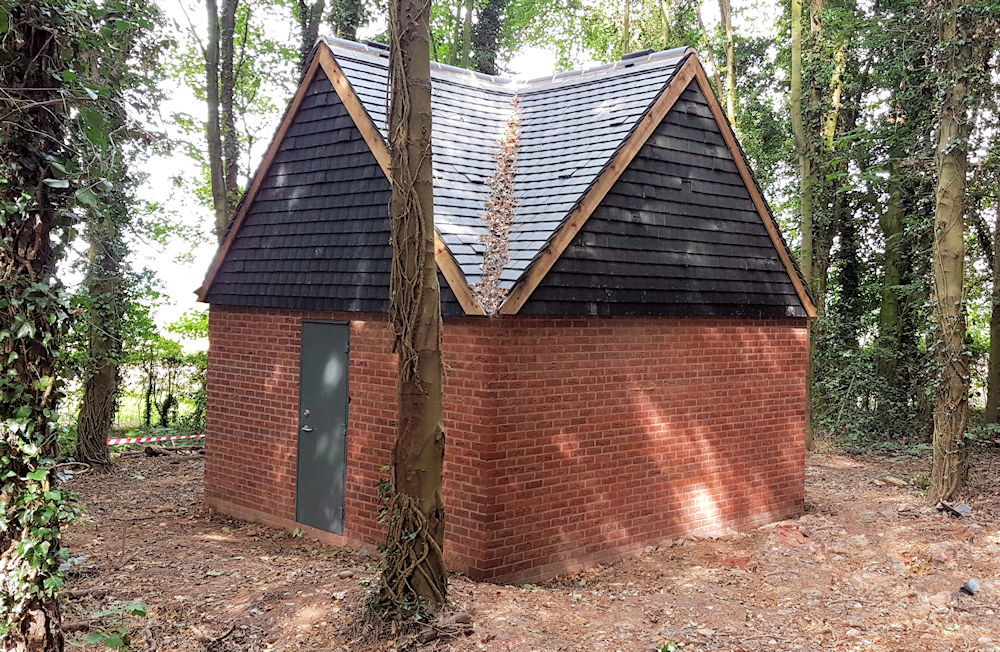
Bat House Construction
For millennia Bats and people have been sharing dwellings, but more recently the scarcity of land and the continued pressure to develop housing has impacted on the natural roosting sites for many Bat species. With the conservation of these protected mammals being of utmost importance, man-made roosts or Bat Bunkers placed in areas they are drawn to can provide a stable microclimate for them to live, but in some cases, man-made structures in the form of Bat Barn Construction are becoming essential in the survival of many bat species.
Some of the team were recently involved with the construction of three Bat Bunkers and the conversion of an existing building previously used as a substation. The site was significant, covering some 75 acres it is in the process of being prepared for the construction of 100’s of houses. Although derelict now, the site has in the past been used for many things including Army exercises, though it was initially set up to be a self-contained village housing a theatre, swimming pool, living accommodation, educational facilities, treatment rooms, chapel and crematorium. Having a boiler room big enough to cater for the whole site made sense, and with a myriad of tunnels running throughout the grounds to carry the services, it was clear that the demolition of the site would be quite challenging.
I mention all of this because over the years the buildings had deteriorated, windows smashed, and roofs leaked. The underground tunnels had become exposed, and inevitably nature had started to claim back the site. As part of this process, wildlife had also moved in, including a thriving Bat community living throughout the disused buildings and tunnels. There are four species found on the site:
Soprano Pipistrelle Bat
The Soprano pipistrelle (Pipistrellus ygmaeus) is known to roost throughout Europe in rooftops and houses. It’s thought the reason for this is the available thermal differences throughout a roof. Maternity colonies roost in rooftops during the summer months as it appears that they prefer warm, dry indoor spaces which are often ideal for maternity colonies.
When outside, they seem to prefer habitats of agriculture land and areas consisting of woodland edges and grasslands. When foraging, they seem to choose a wooded area adjacent to a body of water such as a river, stream, pond, lake, marshland, estuary, canal, sink or reservoir (also known as riparian woodland) over all other habitats.
The Common Pipistrelle
The common pipistrelle (Pipistrellus pipistrellus) is a small pipistrelle bat whose range extends across most of Europe, North Africa, southwestern Asia, and may extend into Korea. It is one of the most common bat species in the British Isles.
In 1999, the common pipistrelle was split into two species based on the different frequency echolocation calls. The common pipistrelle uses a call of 45 kHz, while the soprano pipistrelle echolocates at 55 kHz. Since the two species were distinguished, several other differences in appearance, habitat and food, have also been discovered.
Tiny in size, it is 3.5–5.2 cm long (head-and-body) with the tail adding 2.3–3.6 cm. Weighing in at just 3.5 to 8.5 g, it’s wingspan ranges from 18 to 25 cm. It is common in woodland and farmland but is also found in towns, where the females roost in lofts and buildings when rearing young.
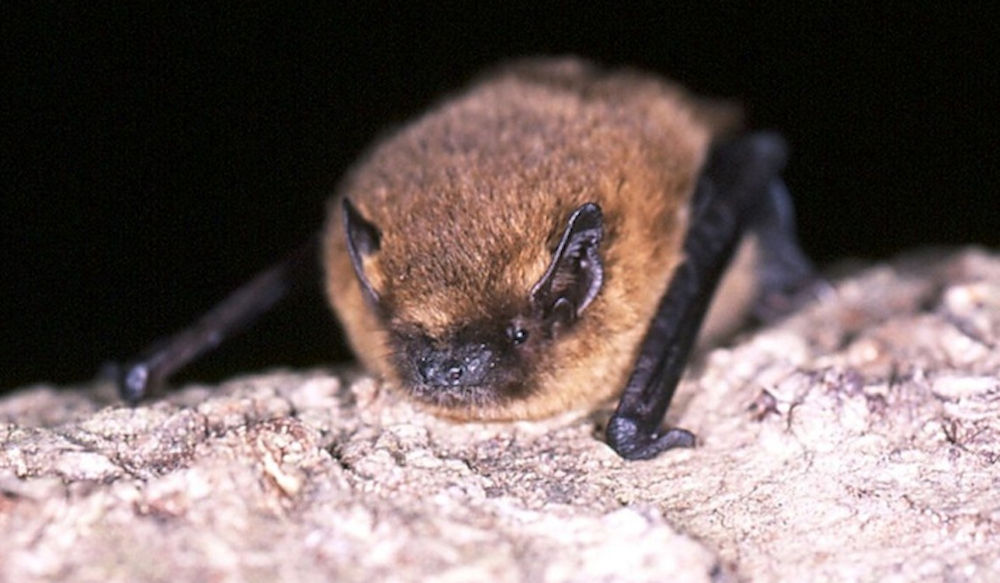
Lesser Horseshoe Bat
The lesser horseshoe bat (Rhinolophus Hipposideros) is one of the world’s smallest bats, weighing only 5 to 9 grams, with a wingspan of 192–254 mm and a body length of 35–45 mm. It has strong feet that it uses to grasp rocks and branches and can see well despite its small eyes. Like most bats, lesser horseshoe bats live in colonies and hunt their prey by echolocation, emitting ultrasound from specialised round pads in their mouth.
When hunting, they are quick and agile, often flying within five metres of the ground while avoiding contact with bushes and shrubs.
The lesser horseshoe bat eats small insects, most of which are harvested from stones and branches. Their favourite types of prey include flies, moths, and spiders.
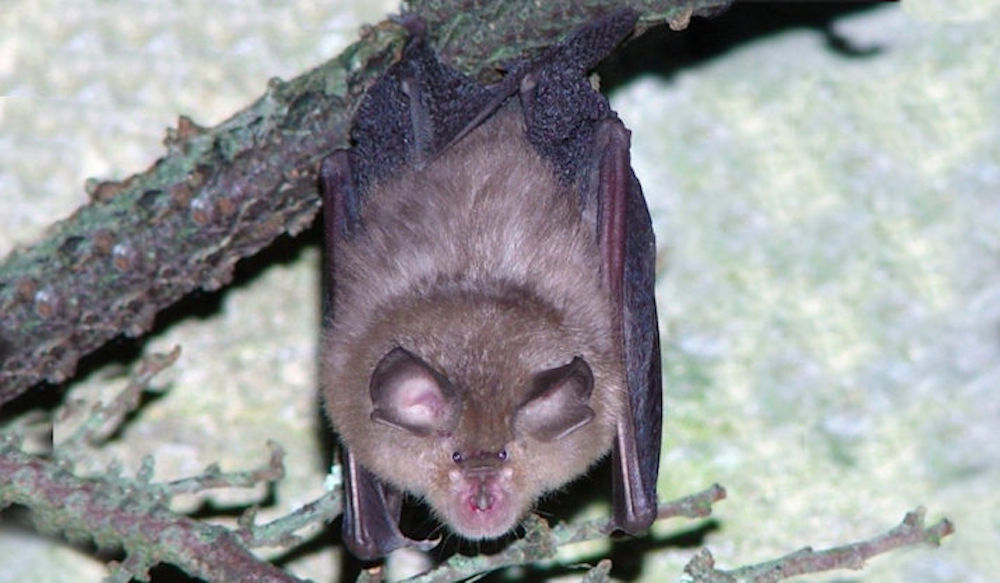
The Brown Long-eared Bat
The brown long-eared bat or common long-eared bat (Plecotus auritus) is a small Eurasian bat recognised by its long ears which have a distinctive fold.
An adult bat has a body length of 4.5-4.8 cm, and a tail of 4.1-4.6 cm. The ears are 3.3-3.9 cm in length, and readily distinguish the long-eared bats from most other bat species.
They are relatively slow flyers compared to other bat species.
Brown long-eared bats regularly utilise buildings roosting in undisturbed roof spaces either singly, in crevices and timber, or in clusters around chimneys and ridge ends. This species also roost in tree holes, bat boxes and caves which are essential as winter hibernation sites.
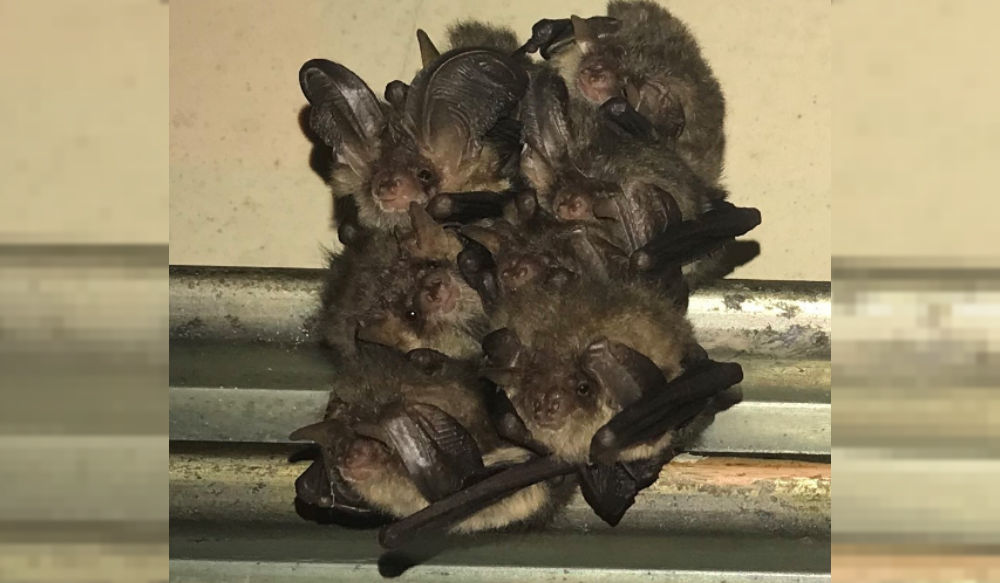
With roosts throughout the existing buildings and tunnels, the demolition contractors couldn’t move in until the Bats were provided with alternative accommodation; they are after all a protected species. That’s where we come in. The teams’ task was to create three Bat Bunkers and convert an existing building in such a way as to be attractive to these tiny winged creatures.
With the demolition guys waiting patiently, sledgehammers in hand, it was up to us to get to the site, mobilise our equipment and labour and start procuring the materials.
The Site
First things first, this was a big site with a lot going on. Okay, so we only had to build three buildings and refurbish a fourth, but none of the individual plots was visible from the site office which was ¾ of a km away from the main security gate. If you wanted to walk from Bat Barn 4 to Bat Barn 1, you’d need to put your best foot forward as there was 1km of tarmac road between them. Recognising that communication could be a problem, walkie-talkies were given to all site supervisors and first aiders to enable the site manager to stay in contact with the staff and contractors at all times.
An unusual site in so many ways, there is and had been for many years 24/7 security on site. I say that it’s unusual because when you bear in mind the nature of the site and how unsafe some of the buildings were, the public had access via public rights of ways running through various sections of the estate. So even with a perimeter fence and 24/7 security, in places, the public could walk straight through the site! From a health & safety standpoint, that’s a building company’s worse nightmare, and it was recognised early on that 100’s of metres of Heras Fencing would be required to protect the public from inadvertently walking onto a live building site. In addition to the fencing, signs were erected, and lots of them. And not just the ones which we have to put up to comply with H&S of which there were over 100, but signs directing staff, contractors and delivery drivers around the site; take a wrong turning here, and you will find yourself back to where you started.
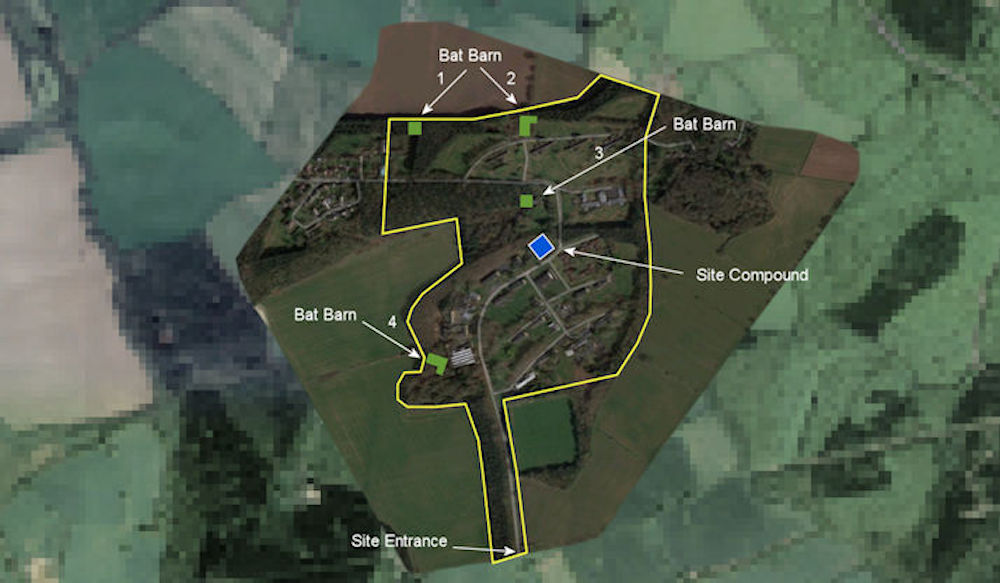
So, with the site set up, offices, welfare cabins and compound all in place, it was time to break ground.
The Bat Bunkers
We were to build houses to accommodate Bats, sometimes called Bat Bunkers. Three were to be new build houses, the third a refurbishment of the old substation. Two of the buildings Bat Barn 4 and 2 were of the same design with the third, Bat Barn 1, a 5-metre square brick box with an unusually complex roof consisting of 4 gable ends making for an aesthetically pleasing feature. These were not insignificant buildings, equivalent to a single bedroomed bungalow without windows. Add windows, a lick of paint, picket fence, turf and a drive, and you’d have a pad in the countryside to die for. Of course, you’d have to significantly improve the internal space to make it habitable for humans, but then again, these bijou bungalows, built to last a hundred years or more have been designed to house a variety of Chiroptera, and the hope is that they’ll be queuing up to reserve their spot.
Bat Barns 4 and 2
L-shaped, new build, single-storey bungalows, 10.6m long to one elevation, and 7.6m long on the right angle. They would consist of an external skin of facing bricks and unusually, a full-height internal leaf constructed of engineering bricks. Unusual because typically, engineering bricks are only used up to the damp course after which we would build using concrete blocks for both speed and thermal qualities, but Bats don’t like concrete blocks, and much prefer a well put together engineering brick, who knew it?
Build quality was also a moot point, and although we had to produce a building of sound structural integrity, there was to be no pointing of mortar joints to the inner leaf, in fact, the rougher we could be the better as it gave the Bats something to hang off or to!
We were to create four rooms at ground floor level, an underground Hibernaculum (basement), and a loft space that any teenager would give their right arm for. The internal ground floors would remain as dirt and the outside gutter redirected inside the property to maintain an acceptable level of moisture; important if the little mammals were to be kept in the comfort they were accustomed to.
With no windows in the building, a couple of louvres were installed to allow the Bats easy passage. Outwardly, there was nothing particularly special about the buildings other than their sheer size and their extraordinary inhabitants. That said, the subtle design features that enable these nocturnal dwellers to live in comfort include holes of a particular size in tiles and walls which create gaps just big enough for them to squeeze through. Bat boxes designed with slats and spacings of a specific size allow them to feel secure when wedging themselves into position, and roosting boxes that in the world of Bats would be the talk of the town. Add to that ruched roofing felt, the Bat-world equivalent of swags and tails, and a variety of other bits of strategically placed and scuffed timber, baffles and hanging rails and what you end up with is the Bat equivalent of the Burj Al Arab in Dubai.
Bat Barn 1
A more straightforward build than that of 4 and 2 above. At 5 metre’s square, it would still include all the features Bats love whilst boasting a single room to the ground floor, and eloquently designed loft space. Structurally the same as 4 and 2, the main feature was that of the roof formed from the four gables to each elevation which in turn were to be cladded in tiles to create both a pleasing feature and act as additional nesting space if required. As the saying goes, “a picture paints a thousand words” so please feel free to browse the gallery.
Bat Barn 3
Previously a substation which supplied the site with electricity, we had minimal work to be carried out on Bat Barn 3. Access for the Bats via the roof was provided by adapting roof vents placed strategically front and back. Doors were blocked up and openings formed. In creating the main feature of the building, a tile clad façade hanging 1 metre below the roof eaves, we also created additional nesting space behind the cladding. Again, the gaps employed are all specific to the Bats needs with the thickness of batten used creating the perfect distance from wall to tile to encourage them to stop by and take a look.
Bat Barns Fit For Purpose
In creating the perfect internal environment for the Bats, an important consideration was how hot the buildings would get! Bats need different roosting conditions at different times of the year, and they will often move around to find a roost that meets their needs. Some bats prefer hollow trees, some like caves and some use both at different times. Constructing the buildings at a particular angle to the sun takes advantage of the suns heat on specific elevations creating various heat pockets and moisture levels throughout the building. Combined with the many other measures put in place, we hope it will create an environment the Bats will love.
As land owners, Homes England worked in partnership with Wood, and the team now at Grayson Trade and Natural England throughout the project at Lea Castle to ensure best practice and the protection of the several species of bats on site. The result was the delivery of an innovative solution that not only provided an appropriate environment for these protected species but also enable the necessary demolition works to get underway in order to develop the site – Sarah Taylor Project Manager Homes England
In the UK, some bats are ‘indicator species’, because changes to these bat populations can indicate changes in aspects of biodiversity. Bats might suffer when there are problems with insect populations (because our bats feed on insects) or when habitats are destroyed or poorly managed (for example, some bats only live in large woodlands). If you’d like to find out more about Bats, Bat House Construction their habitat, and how you can help to protect them, please visit The Bat Conservation Trust where you can find lots of information.
With a shortage of housing in the UK, more development of land is needed, and Bat House Construction will become even more critical. If you would like to find out more about Grayson Trade’s services, have a question about a project you are about to undertake, please feel free to email us here. Prefer to talk? Call us on 01902 595 145 we’d be happy to help.
If you would like to find out more about Grayson Trade’s services, have a question or would like us to visit you to discuss your project requirements, please contact us here. We will be pleased to help.
Call us on 01902 595 145 for more information.
